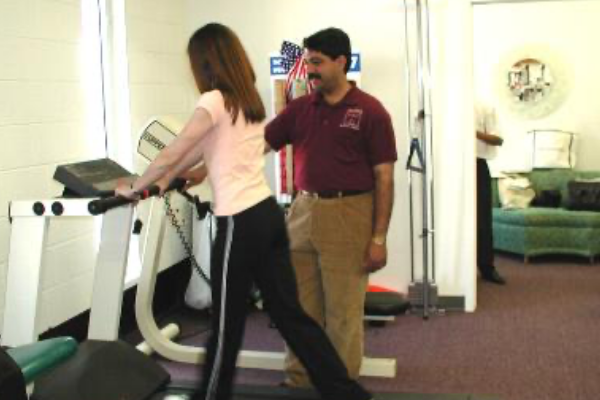Imagine a life without pelvic pain or the embarrassment of leakage or the need to keep running to the bathroom. This is possible with Pelvic Floor Rehab.
What is the Pelvic Floor?
The pelvic floor is a group of muscles within the pelvis, creating a hammock for the bladder, uterus and intestines. Both men and women have a pelvic floor, and therefore both men and women may be in need of therapy for their pelvic floor.
The pelvic floor muscles support structures such as the bladder and uterus, work with the bladder as part of the urinary system, control bowel elimination, play an essential role in sexual, reproductive, and labor functions, and participate in breathing along with the diaphragm and abdominal muscles.
Just like any muscle in the body, the pelvic floor muscles may be strong or weak, spasmed or flaccid, functioning or not functioning. The state of the pelvic floor muscles will in turn have an effect on the genitourinary system.
Common Issues Experienced:
- Urinary incontinence (urge, stress, postural, mixed)
- Fecal incontinence
- Pain in pelvic region
- Pain in lower abdominal region
- Painful intercourse
- Pelvic organ prolapse
- Urinary retention
- Frequent UTIs
- Constipation
- Pain in hips
- Lower back pain
- Diastasis Recti (abdominal muscle separation)
- Endometriosis
- Interstitial cystitis
- Menstrual cramping
What to Expect from Pelvic Floor Physical Therapy?
Every patient is unique, and so is Pelvic Floor Physical Therapy. Your plan of care will be tailored to you, based on your diagnosis, symptoms, physical exam, and personal goals.
On the first visit, the pelvic floor therapist will ask questions to gather information about the your history, symptoms and goals. Then, the therapist will perform a physical examination, consisting of external and internal pelvic floor exams, posture, gait, range of motion, and strength analyses. The exam will help to guide the development of a plan of care.
During follow up visits, you will receive manual treatment, neuromuscular reeducation, and perform a series of corrective exercises. The therapist will educate the patient on the nature of your condition and provide tools to help self-manage symptoms.
Depending upon your customized plan of care, your treatment may include a massage, stretches, exercises, yoga, gyne-visceral manipulations, meditation, myofascial release, biofeedback, and more may be included in your therapy.
Why Choose Pelvic Floor Physical Therapy?
- To stop symptoms from worsening
- to stop the pain
- to avoid surgery
- to rehabilitate after labor and delivery
- to prevent pelvic organ prolapse
- to regain your life!
Call us now to find out how this life changing treatment will benefit you.



